The Pleasures of Venice and London in Spring 2018
“The Pleasures of Venice and London in Spring 2018” PRIMETIMES,(Ithaca Times), Autumn 2018, https://www.ithaca.com/living/prime_times/the-pleasures-of-venice-and-london-in-spring/article_488fa3d4-c74e-11e8-8be0-6f7fb8e343f1.html
All photos by Marcia Jacobson
|
Introduction
My wife, Marcia Jacobson, and I often go to Europe for about 11 nights in in late March and early April during Cornell’s spring break. While this is the beginning of the heavy tourist season, it is not as busy as summer high season and the weather is warmer than in Ithaca, especially if you go as far south as Florence or even further south like Naples or Sicily. To be sure, you may as we did this year encounter a good deal of rain. Still museums are not overcrowded, and restaurants reservations are not difficult to get.
Getting There
Flights from Ithaca are often complicated, and when we are not constrained by the academic Cornell calendar we often fly from New York. Our three flight itinerary was Ithaca-Newark-Munich-Venice; we missed our connection in Munich because there was not enough time to get to our gate after landing. I had been very doubtful that we could make this connection, but United assured us that we could. The lesson: as we get older we need to leave enough time to get from one gate to another even if they turn out to be far apart.
|
Venice
I have been to Italy thirteen times, but this was only my third trip to Venice and my wife’s fourth. After arriving in Venice, we took a water taxi (27 Euro round trip, with the Euro about $1.20 to the dollar) to the hotel. Venice is a walking city with small islands divided by canals but accessible by countless bridges; many of the historic sites are on or close to the Grand Canal.
During our six nights in Venice we stayed at the Boscolo Venezia, a hotel in an old palace that used to be called the Grand Hotel Dei Dogi. The hotel has 72 rooms and a beautiful private garden, a rarity in Venice. While our room overlooked a canal, some rooms overlook the lagoon that surrounds Venice. Located in the quaint Sestiere Cannaregio--a more residential area than the Grand Canal area but still hardly lacking tourists--the hotel is in an area that gives you insight into how Venetians live. With the help of the hotel staff we found many nice restaurants within walking distance. The hotel provides free water taxi service which takes guests close to St Mark’s Square or simply the Piazza, which is dominated by St. Mark’s Basilica, dating to the 11th century. We enjoyed the excellent breakfast and appreciated the attentive staff. The only major issue is inadequate internet which often doesn’t work at all. Supposedly the internet is soon to be upgraded.The hotel also lacks a gym.
|
The exterior of St. Mark’s Basilica is dominated by four stone horses. The most striking features of the interior are the elegant gold ground mosaics. It is best to arrive early to avoid long lines, especially on rainy days when standing outside waiting to get in is not much fun. Tourists are encouraged to do a quick walk through, but with a little initiative it is possible to step out of the moving lines and spend some time marveling at the mosaics and other features of the interior.
Along with St. Mark’s, the adjacent Doge’s Palace, dating back to the ninth century but rebuilt several times, is one the major tourist sites. It is one of the museums run by the Fondazione Musei Civici di Venezia. A ticket gives you access to eleven different museums. Among the sites included in the ticket to the Doge’s Palace is the Museo Corror, located in a former Royal Palace in St. Mark’s square and featuring the art and history of Venice; the highlight for us was paintings by the Bellini family.
Until June 10, 2018 the Doge’s Palace was featuring a John Ruskin exhibition. The English art and architecture critic and scholar John Ruskin explored the palace in detailand used his photographs and prints tocall attention to the need for preservation. While exploring this exhibit, we did not share the rooms with a plethora of tourists, but we did have the pleasure of meeting one of my favorite actresses, Kristen Scott Thomas (“The Darkest Hour,” “Sarah’s Key”). On another visit a few days later, we focused on a display of residual columns from the Old Palace as well as on the elegant Ducal rooms with great Tintoretto and Veronese paintings as well as other masterworks on room ceilings.
For us the Peggy Guggenheim Collection, located on the Grand Canal is a highlight of our Venice visits. It has a splendid collection of modern art, including major American post-war painters such as Pollack and major European art from the first half of the twentieth century, including Picasso, Mondrian, Klee, and many others. The museum is in Guggenheim’s former home and offers very helpful information the works of art.
|
Another major museum is the Academia which has a splendid collection of Venetian masters--Titian, Tintoretto, Veronese--but information without an audio is in short supply. There are few wall descriptions in any language and the information cards in the rooms are mostly in Italian. Except for well-informed visitors, this museum still continues to offer an inadequate experience.
Day Trips from Venice
On past visits, we have visited the famous islands in the Venetian Lagoon: Murano, a center of glassmaking, but also the site of the Church of Santa Maria e San Donato with its Byzantine mosaic pavements; Burano, featuring lace work and brightly colored homes; and Torcello, where the major site is the Basilica of Santa Maria Assunta, with the earliest mosaics in Venice dating to the eleventh century. The best way to explore these islands is to by a one day vaporetto (water bus) ticket. Our hotel took guests to Murano free, but I would recommend not missing the other two islands.
One of our most enjoyable days was our visit to Ferrara. I have wanted to visit Ferrara because it is the site of the major Italian-Jewish writer Giorgio Bassani’s novels. The old ghetto, now gentrified, is the site of Giorgio Bassani's great works about Jewish life, notably The Garden of the Finzi-Continis (which became a an award-winning film by Vittorio De Sica) as well as many other fine works of fiction including Five Stories of Ferrara. Attending Passover services in the only remaining synagogue was a moving experience as was a walk through the former ghetto. We also visited the elegant Ferrara cathedral and observed Easter services. Ferrera was heavily bombed during WWII because it was part of the Nazi Republic o Salo puppet government in Northern Italy headed by Mussolini who had escaped after he was deposed and the succeeding government of Italy had surrendered to Allies.
|
Had a close friend not told me about the terrific Giottos at the Cappella degli Scrovegni Chapel, I would not have made arrangements for us to see them and would have missed a splendid sunny day exploring Padua. To see these Giottos, you need to get timed tickets in advance. Before entering the chapel with no more than 24 other people at a time you are strongly encouraged to see a splendid 15 minutes film that prepares you to get the most out of your visit. At the same site as the Giottos, in the cloister of the former Eremitani monastery, there is a wonderful art museum, the Eremitani with particularly strong medieval holdings. We also visited both the Duomo and Basilica, each impressive in its own right.
|
We walked the former Jewish district. The Museo della Padova Ebraica (Museum of Jewish Padova) is in the former “German,” synagogue, Sinagoga Tedesca, used by the Ashkenazic community, which was inaugurated in 1525 in the heart of the Jewish quarter or ghetto. Nearby is the 16th century Italian rite synagogue, which is still used by the small Jewish community numbering about 170.
Be aware that in Italy train fares vary greatly and you can save half by taking a local train that takes 20 minutes more than the express each way. Also be aware that trains have frequent delays. We waited an hour past the scheduled departure time for the 40 minute return trip from Padua to Venice.
Evening Meals
Leisurely dinners within walking distance of our hotel were our evening entertainment. I asked the hotel to recommend middle-price restaurants where locals ate. Our Venetian dinners ranged from decent to inventive and excellent. Service ranged from personal and caring to impersonal if not indifferent. The cost for two generally was, without alcohol but inclusive of service, between $65 and $80; usually we split one salad and one desert, two entrees, and a large bottled water. When we had gelato--always delicious--during the day, we passed on desert at dinner unless it was complementary.If you are expecting bread of Paris or New York caliber, be warned that these Venetian restaurants have what I felt was very ordinary bread--not withstanding the often vaunted reputation of Venetian bread--although they often serve quite nice bread sticks.
|
If you are willing to eat before eight o’clock, you can usually get same day reservations in late March and early April. If you wish to spend less, you can find generic prix-fix meals for in the range of $30 a couple.
With an enthusiastic owner-chef and nice ambience, Colombina is a good value and provided the ideal dinner on our first night when we were tired from the aforementioned travels. After beginning with a small cup of asparagus soup as a bouche, we had a salad, then excellent gnocci and ravioli before concluding with nice cheesecake.
Algiubagio is fairly pricey in terms of cover charge, bottled water and some menu items. But it is inventive and worth the small difference in cost. Moreover, a friendly Albanian waiter helped make the meal memorable. We had a delicious sea bass in orange sauce and fine spaghetti with vegetables. When mixed salad is not on the menu as occurs on occasion, we ask for it as we did here; it was fresh and generous. We also had a complimentary dessert.
Osteria Al Cantinon has simple but imaginative cuisine and friendly service. We had two pastas, one with duck ragu, the other—and better--with fresh tuna, black olives, and cherry tomatoes. We finished with an innovative Panna cotta with ground up capers and citrus jelly.
Ostaria da Riora was open on Easter Sunday when many restaurants were closed.I would rate it as respectable but not really special; the pasta with guinea hen and small plums was very good, but the other pasta, a kind of small stuff ravioli, the house specialty—which my wife liked better than I--seemed doughy to me
Al Vecto Bragosso is a tourist orientated restaurant with an indifferent staff who might not notice if you passed away. I though much of the food-- caprice salad, squid ink pasta, and cheesecake--was serviceable; the gilthead (fish) with artichokes was the most interesting, but the fish was bland. I would pass on this restaurant if you can get into better places.
L’OSTE-ria is a very small inexpensive restaurant run by a proud and caring owner who is not only the waiter but also the person supervising his only employee, the cook, in an open kitchen. We had good lasagna Bolognese and unremarkable and somewhat tasteless sea bass cooked in paper with other sea food and vegetables. Service is slow; to be fair it was our last night in Venice and we were a tad impatient because we needed to pack. At the end of the meal the owner presented us with a nice complimentary tiramisu bouche. In summer eight outdoor tables complement the six inside the restaurant.
London
Leaving Venice via water taxi to the airport—including getting to the right pickup place for the taxi---requires four hours before the plane’s scheduled departure, Thus after the two hour flight and the express tube to Paddington followed by a taxi to the hotel, we had been travelling quite some time.
In London we have been staying in recent years at the JW Marriott (Grovesnor House) in Mayfair. From our past pleasurable visits we knew many of the senior staff and were looking forward to seeing them during our five night stay. But perhaps because the staff who had looked after us were gone, neither our welcome nor the assigned room was what we expected. We wasted time changing rooms to a junior suite, but one without a view. As our five nights progressed, we discovered that the hotel was not what we remembered—nor indeed what I had written about in prior articles—and was staffed by newly hired employees and recently hired pleasant but inexperienced temporary interns. In the case of the concierge desk, where some of the staff had no knowledge whatsoever of London, this created minor fiascos based on bad information.
When I asked the concierge for a moderately priced Chinese restaurant in the area, he recommended the most expensive Chinese restaurant in London. More seriously, another concierge had never heard of the tube “Oyster Card” which cuts the cost of Tube (subway) considerably and caps what you spend per day. You pay five pounds to get the card and then choose the additional amount you purchase for rides, but you get the five pounds back when take your last ride. I learned after losing my card that if you register it—which I did not do because I was not told to—you will get all your unspent money back.
The first night we didn’t venture out and ate in the lounge reserved for Marriott Gold and Platinum guests (we are the latter, and that helps define our high expectations) and had a decent if modest Indian buffet. These informal buffets are a great help in between a day of sightseeing and a theatre night. The next night the lounge served passable Thai food which we ate before theatre.
Although the tube is quite wonderful and has in our experience the shortest underground waiting time in the world, first-time visitors to London should do as much walking as possible and include Buckingham Palace (and the changing of the guard), Westminster Abbey, Parliament, St. Paul’s Cathedral, Hyde Park, and the Tower of London. If time permits, day visits to Oxford or Cambridge are fun. We return to some of these sites on each visit, but on this visit we pursued our interests in museums and theatre. As we returns to cities, as we have to London every few years, it is fun to watch a city evolve. For example this time we discovered the newly developed Bridge area between London Bridge and Tower Bridge, the site of the new Bridge Theatre.
|
London Theatre
In London, a city we try to visit every few years, theatre is the evening’s focal point. We saw the much discussed and for the most part acclaimed Julius Caesar at the aforementioned Bridge Theatre. This cleverly staged, innovative modern production features some contemporary dress, allusions to contemporary politics, and—for me troublesome-- guns rather than swords and knives. That two of major male parts were played by women was disconcerting and changed the interplay between characters, but on the whole the production was excellent.
We saw fine productions of two more modern plays that I had seen a few times before. Amadeus, with its brilliant use of the Olivier Theatre's large stage and its remarkable integration of Mozart's music, is dazzling. I had seen it on the same stage (the Olivier is part of the National Theatre complex) in 1979, but this new innovative production foregrounded what Mozart’s rival, Salieri, was musically up against by including a good deal of Mozart’s music, I also recommend Harold Pinter's Birthday Party, which as with most Pinter, raises more questions than it answers and for most of the evening puts the audience in the muddled middle without giving you many clues as to how the characters got to the situation in which we see them.
Museums
Most of the major London museums are free, although special exhibitions at the same museum can require a special fee up to $30 or so.
Art museums are an important part of our travel experience, especially in those European cities with major collections. The National Gallery is one of best art museums in world with two Vermeers, three Carvaggios, multiple and exceptional Rembrandts, and wonderful medieval paintings, including several by Duccio and Piero della Francesca.On our second visit of this trip, we spent our time with works by Leonardo, Raphael, Botticelli, and the French impressionists. Next to the National Gallery is the National Portrait Gallery, another favorite and especially fun for a history buff.
Focusing on one extraordinarily productive year in his life, the excellent "Picasso 1932” exhibit at the Tate Modern requires a ticket costing slightly more than $30. You should also make time for the rest of this world class collection of modern art. Nor should you miss the Tate Britain with its wonderful Turners that are among stellar holdings of traditional and modern British painters from Constable to Hockney.
|
The British Museum, where I have fond memories of doing research in the British Library Reading Room (now moved) is always a place to satiate curiosity. We spent time in the special room celebrating the museum’s history and also delved into rooms featuring European medieval history and the English Anglo-Saxon period.
On many visits to London we have enjoyed the rather quaint Victorian and Albert Museum. This time our attention was on English paintings (Turner, Constable, Pre-Raphaelites), the silver collection, and medieval tapestries.
Restaurants
As mentioned when we are in London theatre and museums take precedence over dinner but let me mention two moderately priced restaurants:
Dishoom (12 Upper St. Martin Street) is part of a small chain of Indian restaurants with a contemporary spin on traditional Indian cooking. Our meal was surprisingly pleasing and nicely presented although the food did not include the traditional Indian sauces that we as fans of Indian cuisine expected. We spent about $60 for two with mango and fennel lassi for each of us in addition to our main courses.
|
Four Seasons is a generic Chinese restaurant on Waldorf Street within the Chinatown area. Since my student days in the early 1960s when these small family owned kitchens were what I could afford. I have enjoyed funky restaurants in this area. Roast duck was quite tasty, as duck dishes usually are in these establishments, but the other courses were ordinary. The entire meal cost about $35 for two.
Be aware that many London restaurants, including the two I just discussed, are now adding an optional 12.5 per cent service charge. In the past, no tipping was expected. We tipped, as we do in US, according to the service.
In the case of Dishoom, which is very busy and recommends reservations, the tea was complimentary and the waitress was exceptionally attentive. Four Seasons charged us for tea which they did not refill and service was perfunctory.
Conclusion
Our two city journey to places we knew—and in Venice, time for excursions to smaller cities that we had not seen-- gave us a great variety of satisfying and rewarding experiences.
Daniel R. Schwarz is the Frederic J. Whiton Professor of English and Stephen H. Weiss Presidential Fellow at Cornell University, and can be reached at drs6@cornell.edu. He has recent books include How to Succeed in College and Beyond and Endtimes? Crises and Turmoil at the New York Times, 1999-2009. He has been writing travel articles for more than 15 years and has visited more than 100 countries.


 Sampling the local delights
Sampling the local delights
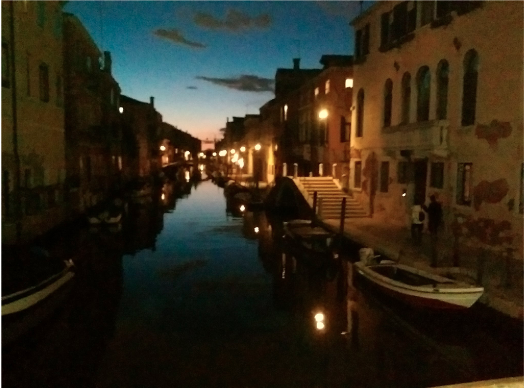 Canal in Venice.
Canal in Venice.
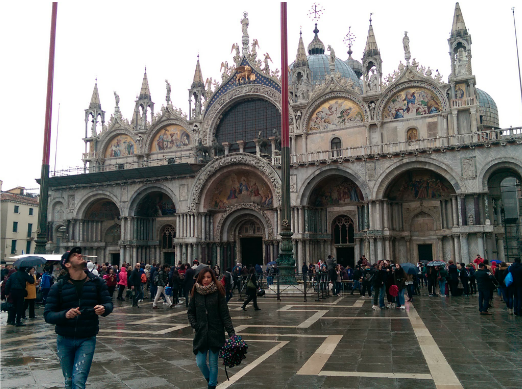 St. Mark's
St. Mark's
 Guggenheim Museum
Guggenheim Museum
 Ferrara Synagogue with Plaques listing Ferrara's Jews murdered in the Holocaust.
Ferrara Synagogue with Plaques listing Ferrara's Jews murdered in the Holocaust.
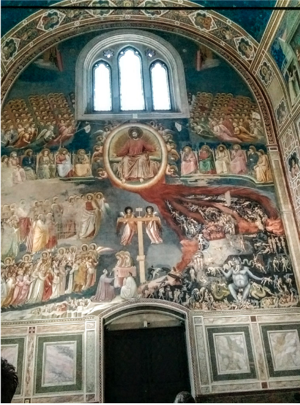 Giottos in the Scrovegni Chapel.
Giottos in the Scrovegni Chapel.
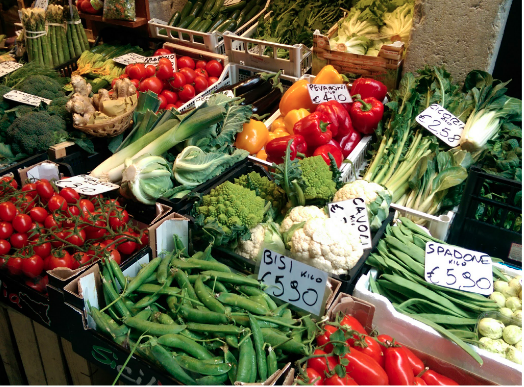 Venetian Vegetable Market.
Venetian Vegetable Market.
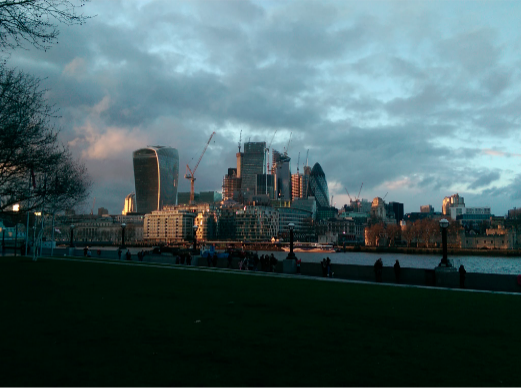 Newly Developed (London) Bridge Area.
Newly Developed (London) Bridge Area.
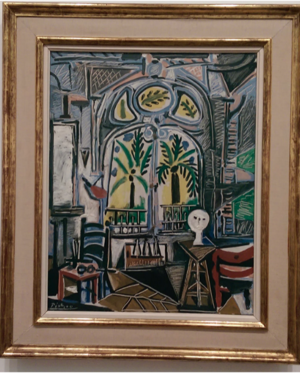 Tate Modern Exhibit: Picasso's 1932 painting of his Studio
Tate Modern Exhibit: Picasso's 1932 painting of his Studio
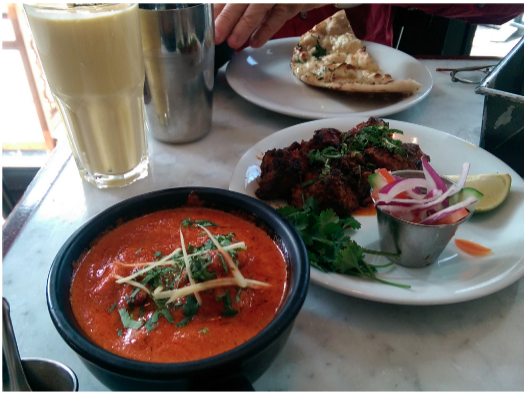 Indian Lunch at Dishoom.
Indian Lunch at Dishoom.